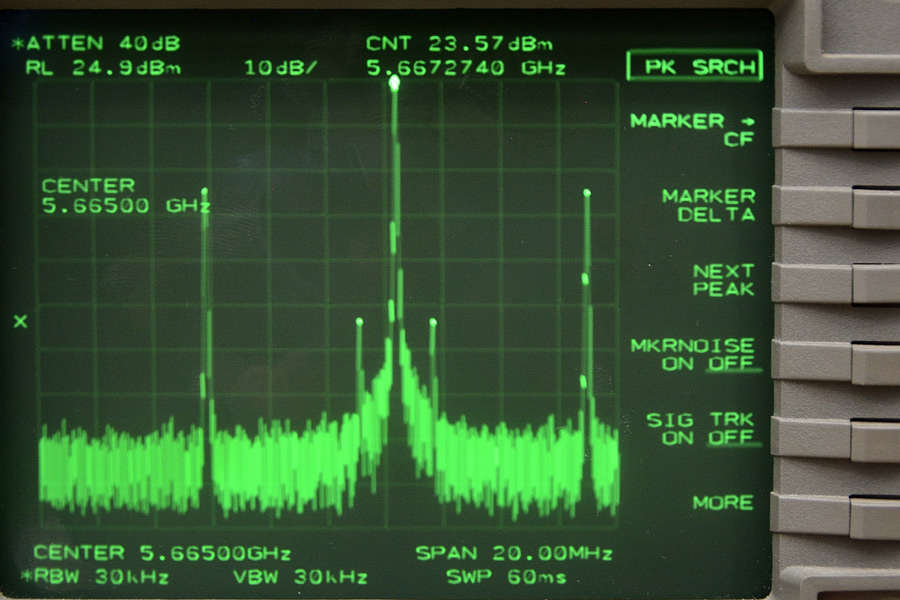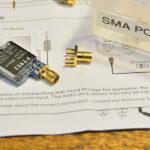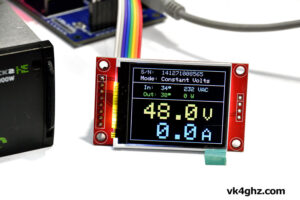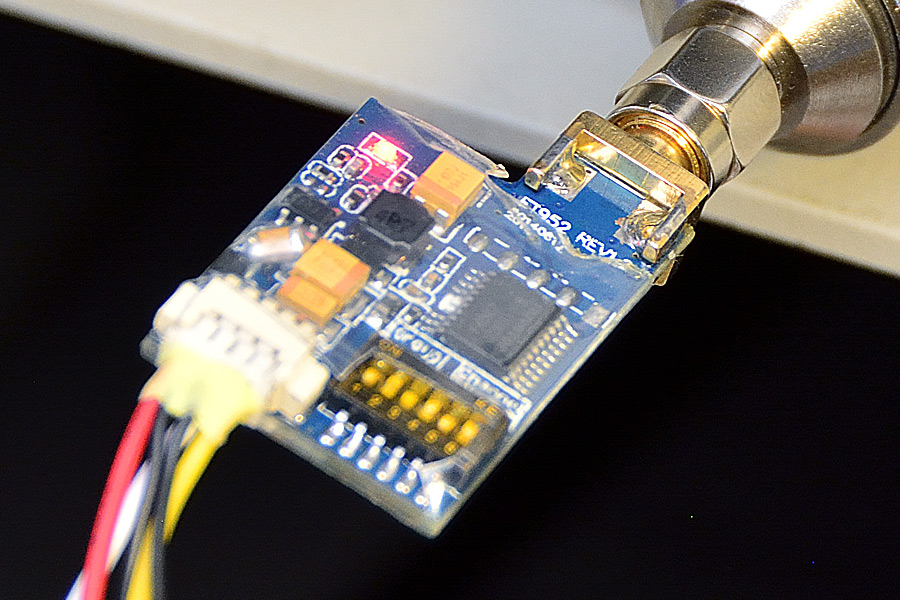
Having recently purchased a 5.8 GHz 200 mW video transmitter for FPV use, and being a radio ham, I was curious to see what this transmitter looked like on the spectrum analyser.
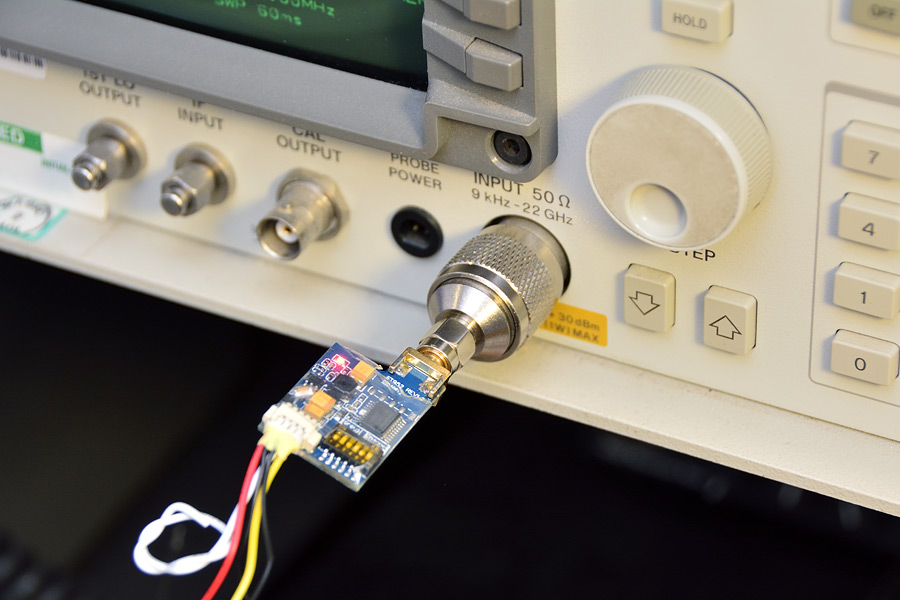
The HP8562A spectrum analyzer is fed with an external GPS-locked 10 MHz reference, coming from a Trimble Thunderbolt disciplined clock, so I’m confident the frequency it reports can be trusted.
The Carbonbird transmitter is capable of 32 channels, so the DIP switch was set to the lowest frequency, being 5.645 GHz.
Annoyingly, no documentation comes with this transmitter, so you have to go the suppliers website, to see the frequency setting table.
I have since made my own table, and keep a print out of that in the kit, in case a QSY is required on the field.
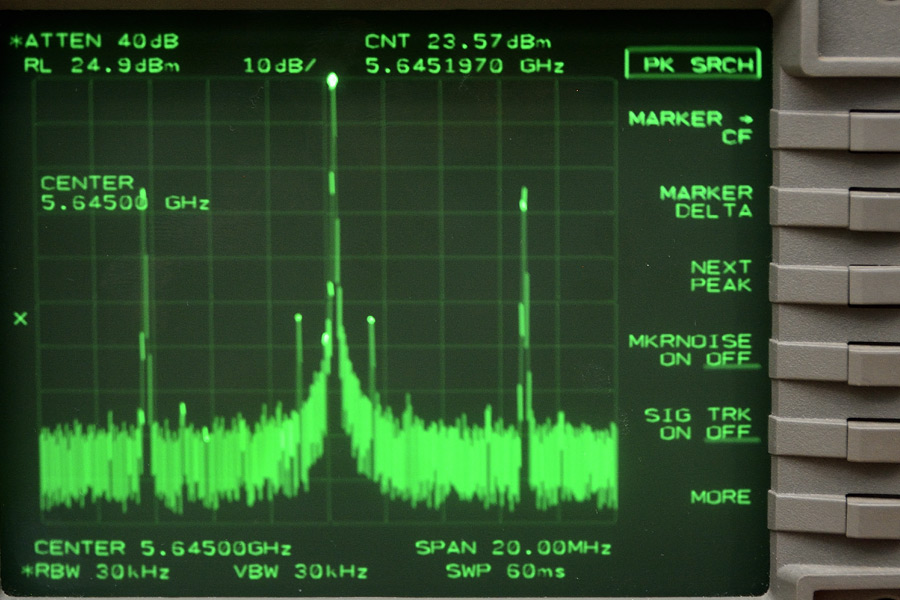
We see two things
• The carrier frequency is not exactly 5645, but 197 kHz on the high side.
This is not an issue, as small frequency discrepancies like this are taken care of by the receiver’s AFC (Automatic Frequency Control) circuitry.
• The output power is measured as +23.57 dBm
It’s very easy to convert between dBm and Watts using the online converter:
http://www.pizon.org/rf-tools/watts-to-dbm-converter.php
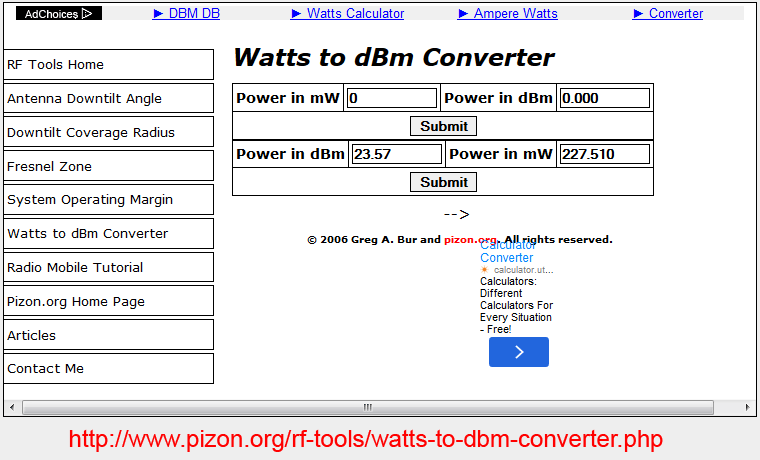
The 200 mW power output spec is being achieved.
Next test was to select the next highest frequency, 5665 MHz (5.665 GHz), and see if that offset was consistent.
Whilst the power output is the same, +23.57 dBm (227 mW), the offset is over 2 MHz on the high side (2.274 MHz).
Thank God for AFC’s in our receivers, because these transmitters are all over the place.
Next test was to select the highest frequency available, 5945 MHz (5.945 GHz).
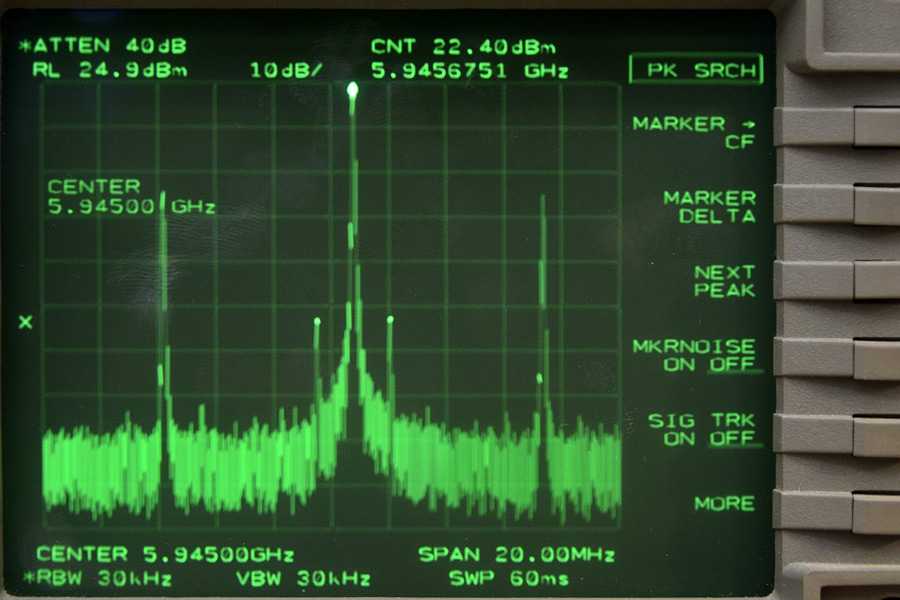
Carrier frequency is 675 kHz high, and power output is dropping off at the upper end of it’s range, falling to +22.4 dBm.
Again, using the online converter:
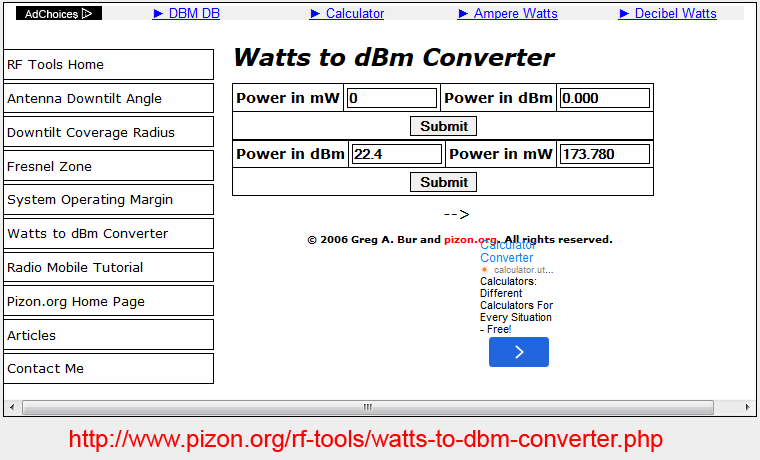
+22.4 dBm = 173 mW.
Whilst frequency accuracy and actual power output will vary from unit to unit, in this case, we are better off sticking to the lower frequencies, for a nominal 31% increase in power output.
This transmitter held it’s frequency and output power with a supply down to 5.4 volts, so the minimum specification of 7V is conservative.
As detailed in a previous article FPV transmitter system modifications, the antenna SMA jack was replaced because the female pin was loose and sloppy and failed to provide a firm connection.
